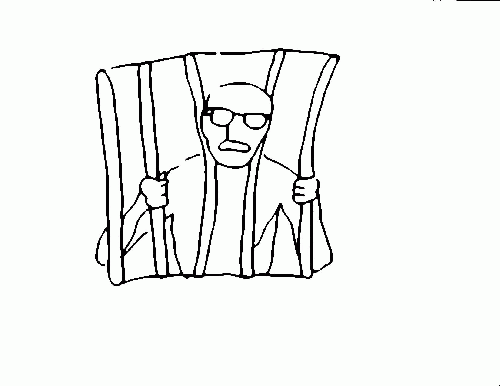(Article changed on February 1, 2014 at 11:38)
By Martha Rosenberg and Robert Wilbur
This week a third inmate died by lethal injection in Missouri in as many months. Herbert Smulls, convicted of a 1991 murder, was executed late Wednesday night, after the Supreme Court denied his last-minute appeal. Smulls' attorneys challenged Missouri's refusal to disclose the compounding pharmacy where it got the lethal injection drug, pentobarbital. Compounding pharmacies are not regulated by the federal government, charged the lawyers and the Missouri facility was linked to a 2012 meningitis outbreak that killed dozens and sickened 700. Two days before the execution, federal district judge Beth Phillips in Kansas City ruled that questions about the drug were not enough to prove that it would cause "needless suffering."
Earlier in January, the protracted execution of Dennis McGuire at the Southern Ohio Correctional Facility outside of Lucasville also raised questions about lethal injection and whether it is a more humane way of death after all. Under the administration of an untested lethal drug combination, McGuire emitted disturbing sounds suggesting a painful, drawn out suffocation.
The number of US executions is declining according to Death Penalty Information Center as are the number of states which impose them. But questions about the justness of the death penalty are growing as death row inmates continue to be found innocent, racial disparities and questions of mental competency continue to surface and lethal injection is questioned as a humane death method. "It is bad enough that the death penalty is barbaric, racist and arbitrary in its application, but it is also becoming less transparent as the dwindling number of death-penalty states work to hide the means by which they kill people," wrote the New York Times in an editorial.
But increasingly lethal drugs are looking as just cruel as electrocution, Denno says, because of "grossly inadequate" protocols about which drug are administered, how, by whom and in what quantities and the clandestine nature of lethal injections. (States need to "take their execution procedures out of hiding," she wrote in a 2007 Fordham Law Review article.) Denno is also concerned about the new and untested drugs used in lethal injections. "We don't know how these drugs are going to react because they've never been used to kill someone," she told Mother Jones.
The electric chair has a ghoulish history from its invention by employees of Thomas Edison to grisly mishaps like Willie Francis who failed to die in 1946 and had to take the "long walk" twice to Pedro Medina whose face mask burst into flames in 1997. Yet lethal injection, also called Carson's Cocktail after the Oklahoma pathologist who concocted the original formulation, is also prone to mishaps like the 2007 case in which guards failed to find a vein and sobbing inmate Romell Broom lay was asked to find his own vein. (The "self-execution" still failed and Broom will also made the long walk twice.)
The Carson Cocktail consists of three drugs: a short-acting barbiturate to knock the condemned person out (originally thiopental); a neuromuscular blocking agent to paralyze the skeletal muscles, including the muscles of breathing (pancuronium bromide); and an agent that stops the heart (potassium chloride).
Since the manufacturer of sodium thiopental ceased production under pressure from the government in Italy, where its plant is based, other European manufacturers also refuse to provide thiopental because of a European Union statute prohibiting the export of any product that might be used in capital punishment.
National Public Radio says the state of Missouri has "fought hard to keep the identity of compounding pharmacy a secret, restricting public oversight, and making it difficult to know if the execution method is both legal and ethical."
Of course, a US execution is already secretive. After the prisoner is strapped down and the needles inserted, the drape is closed and the audience only sees the supine prisoner with long tubes running from his arm to a hole in the wall. The warden and chief executioner who "work" the chemical from the other side of the wall are never seen. Sometimes there are not even witnesses.
But now secrecy extends to "Individuals who prescribe, compound, prepare, or otherwise supply the chemicals for use in the lethal injection procedure," charges National Public Radio. "It's just a shroud of secrecy to try to prevent criticism and skepticism from the public," agrees American Civil Liberties Union of Missouri legal director Tony Rothert. "I think the First Amendment gives the public the right to know who the execution team is, and to question whether or not they're qualified."






